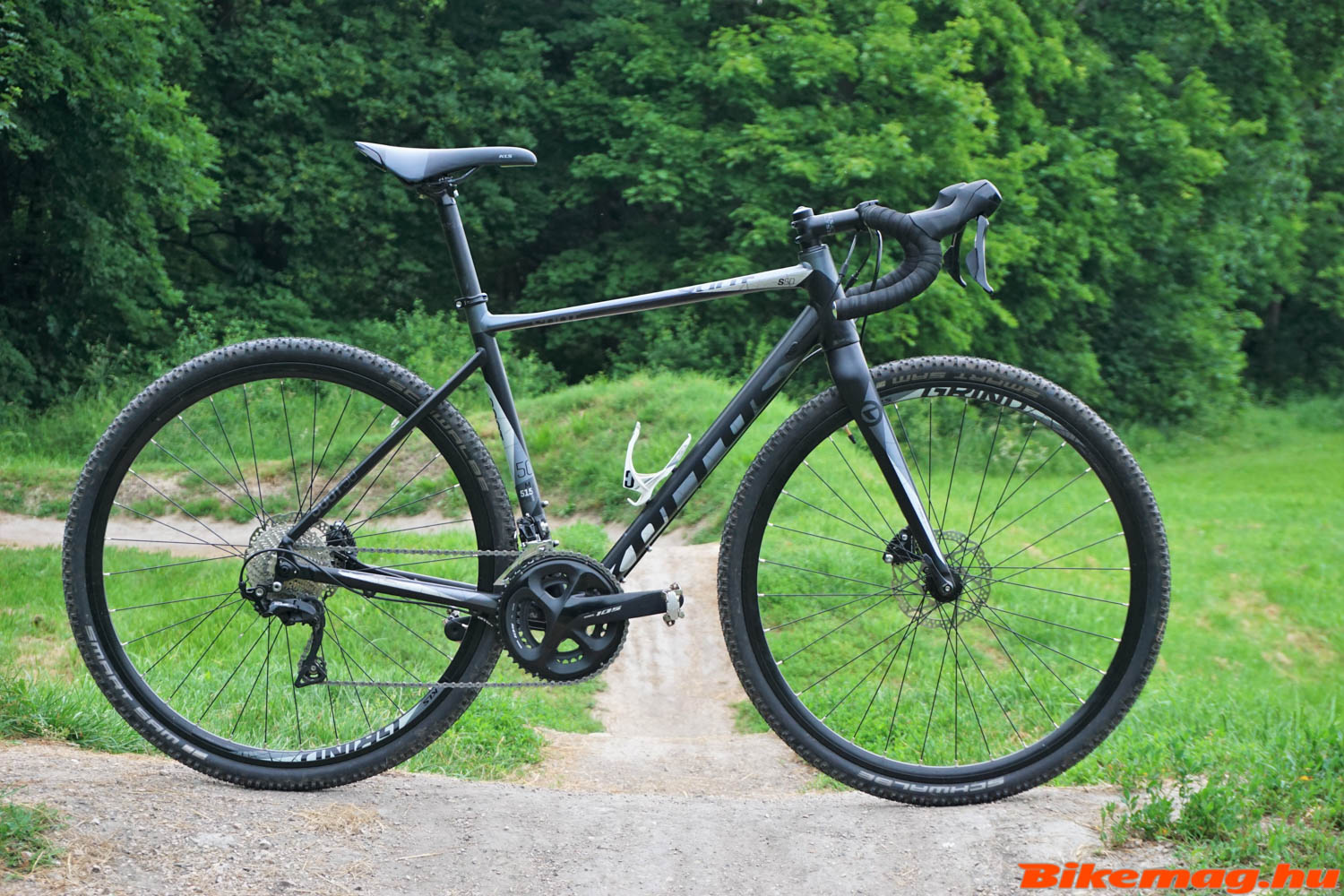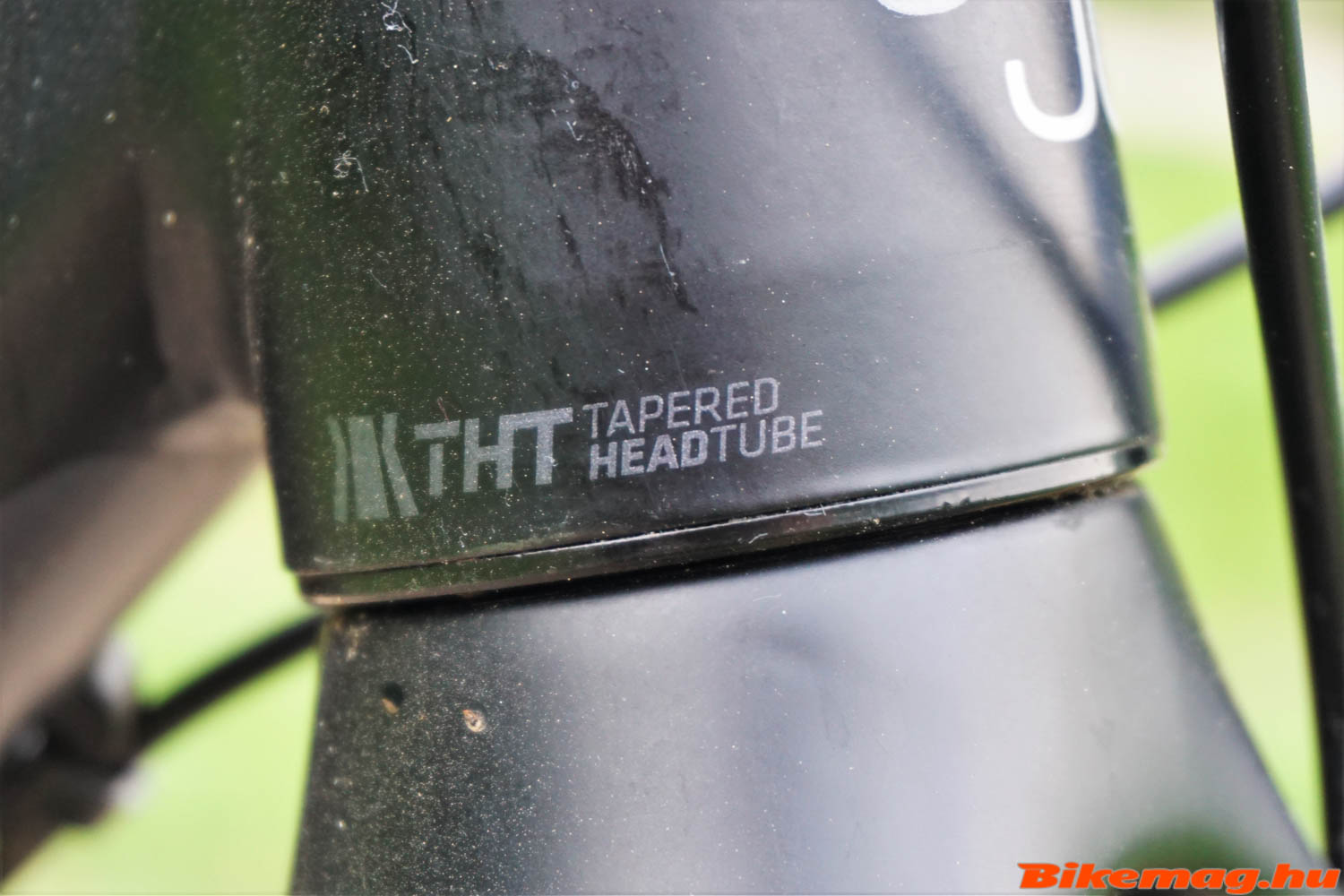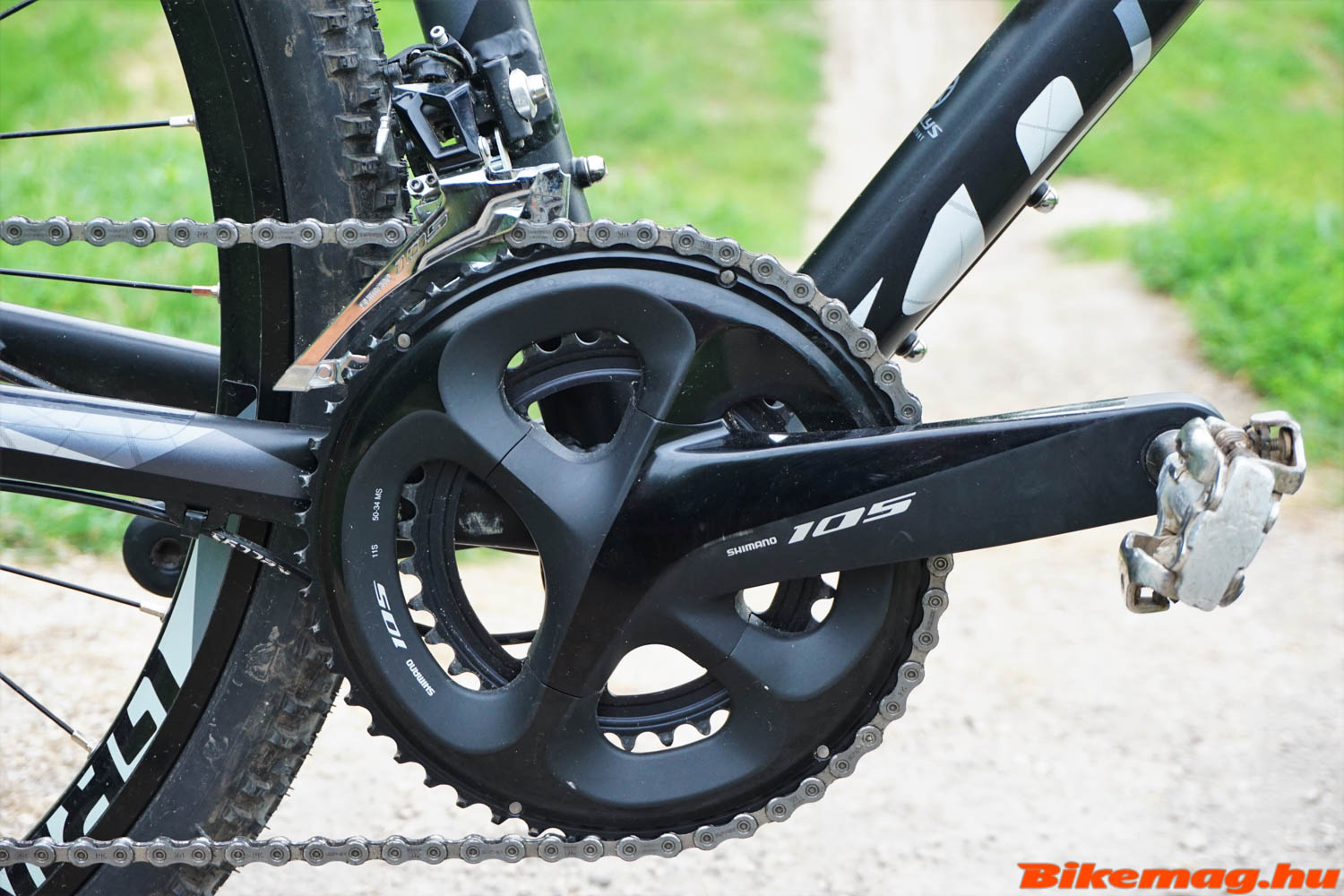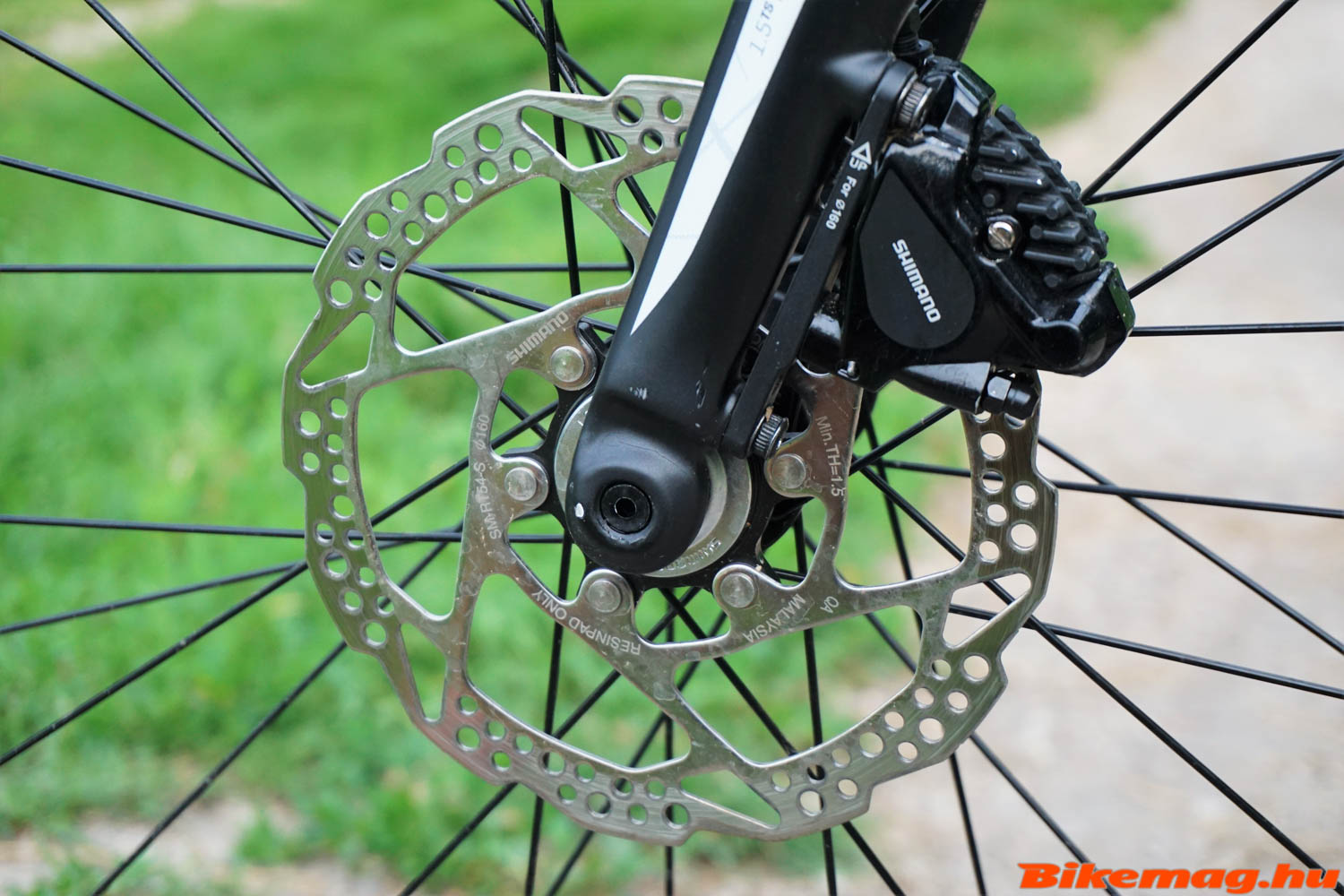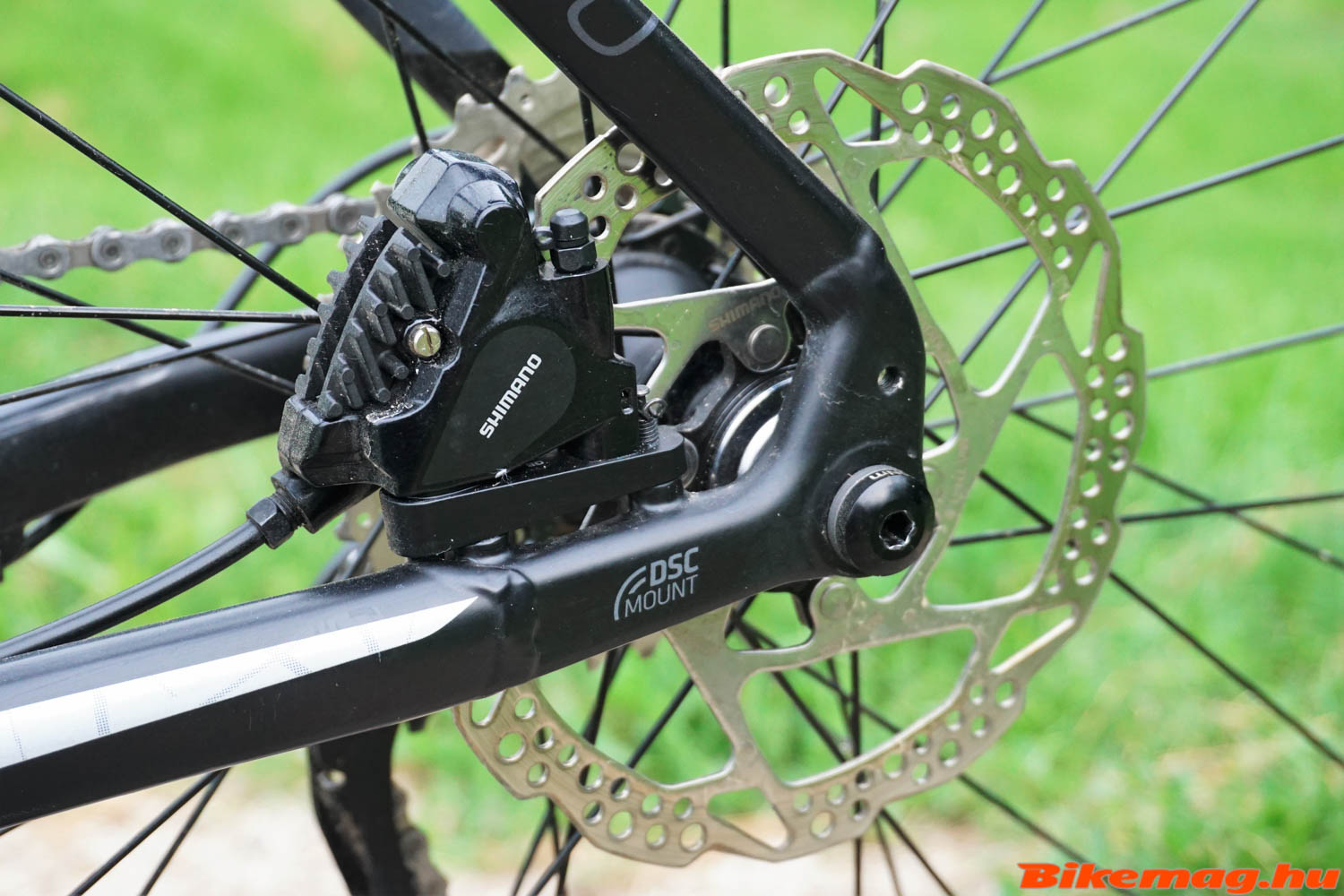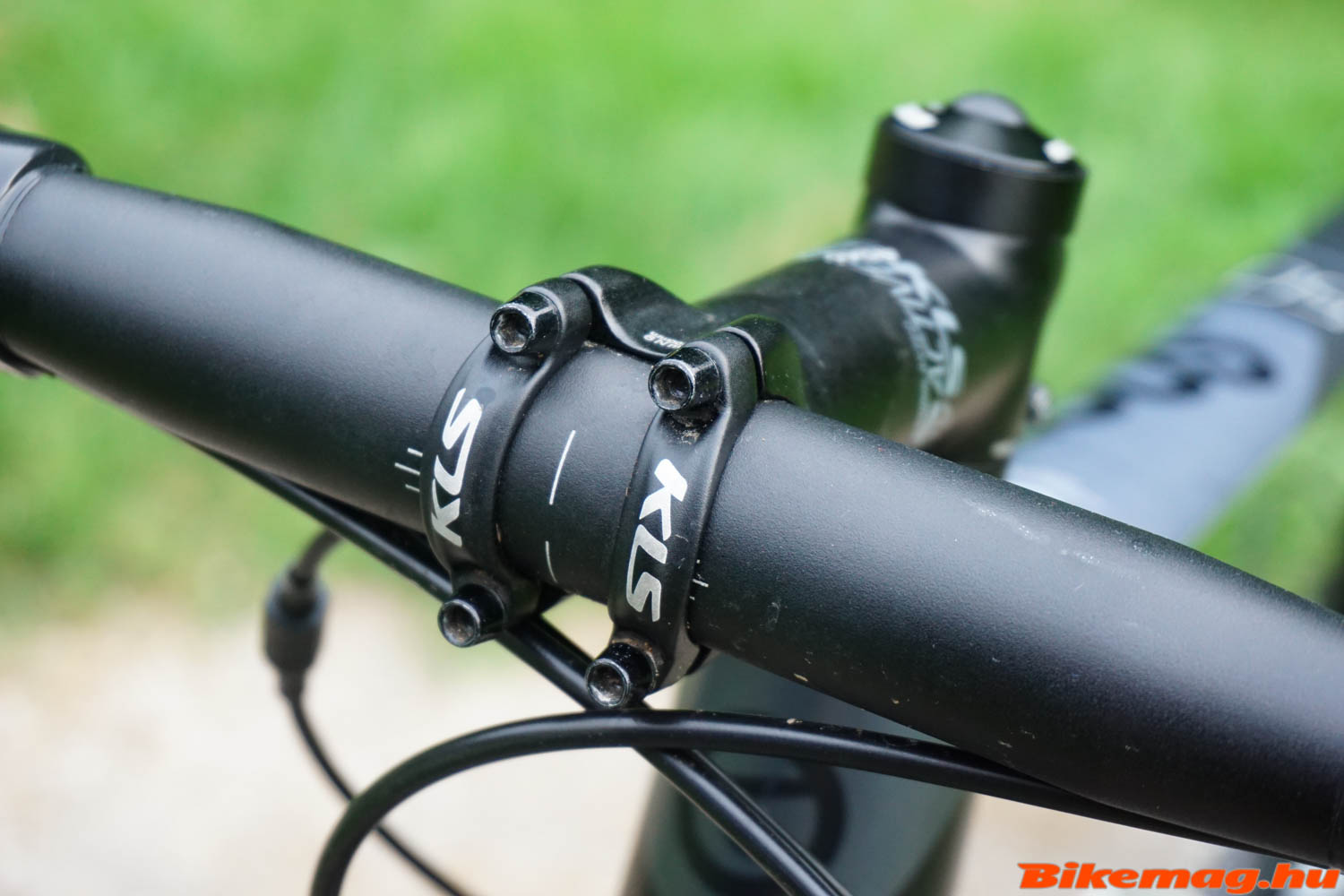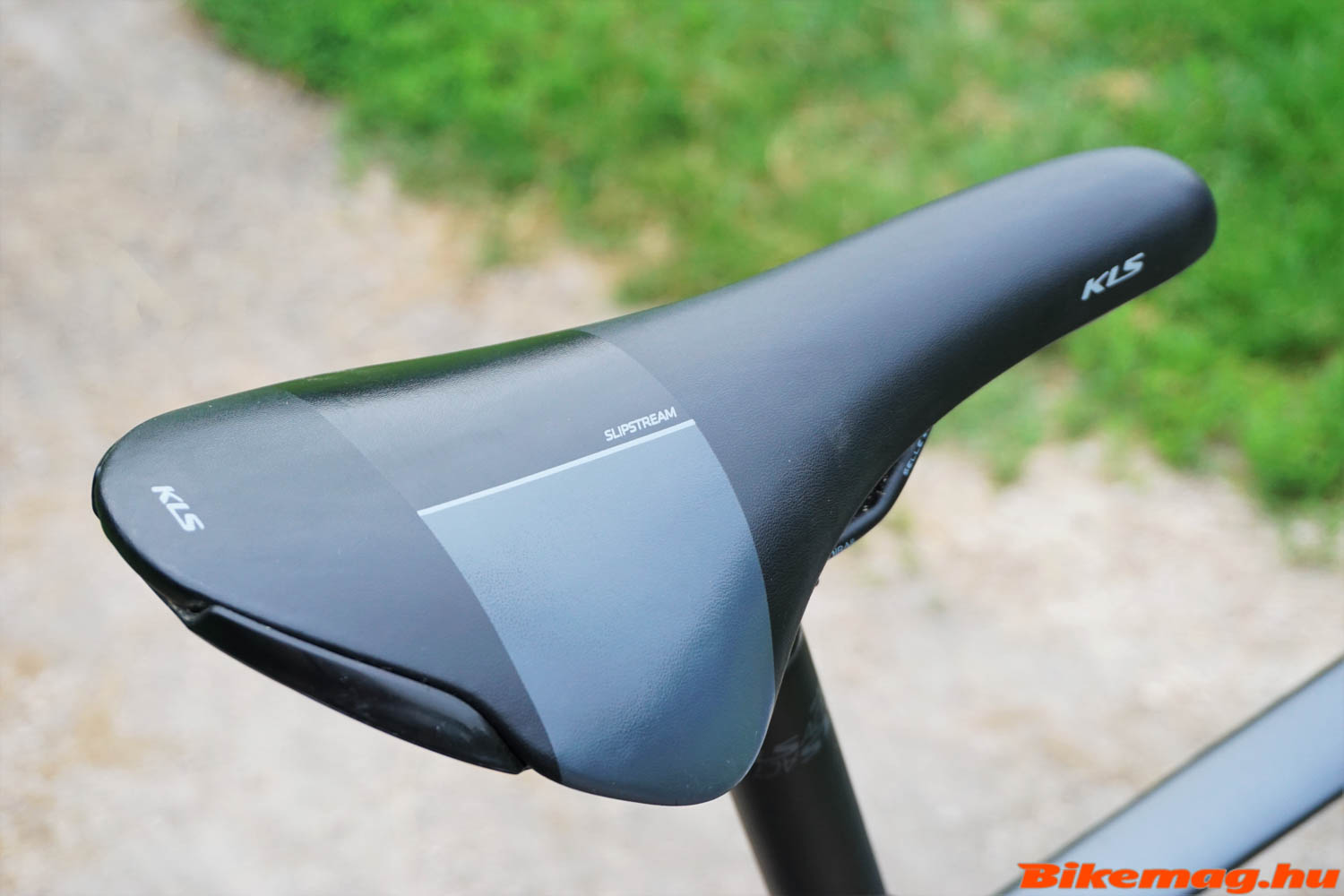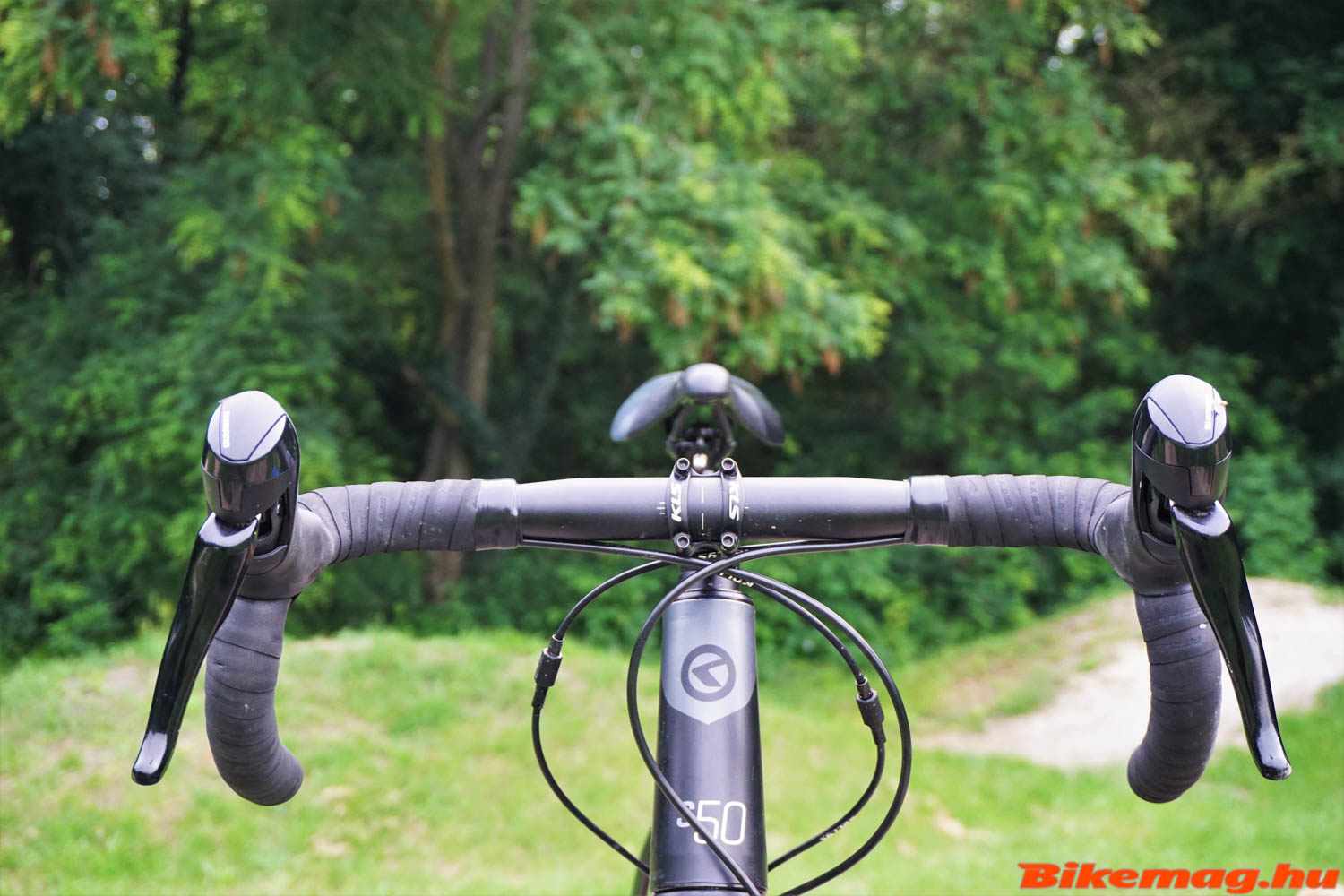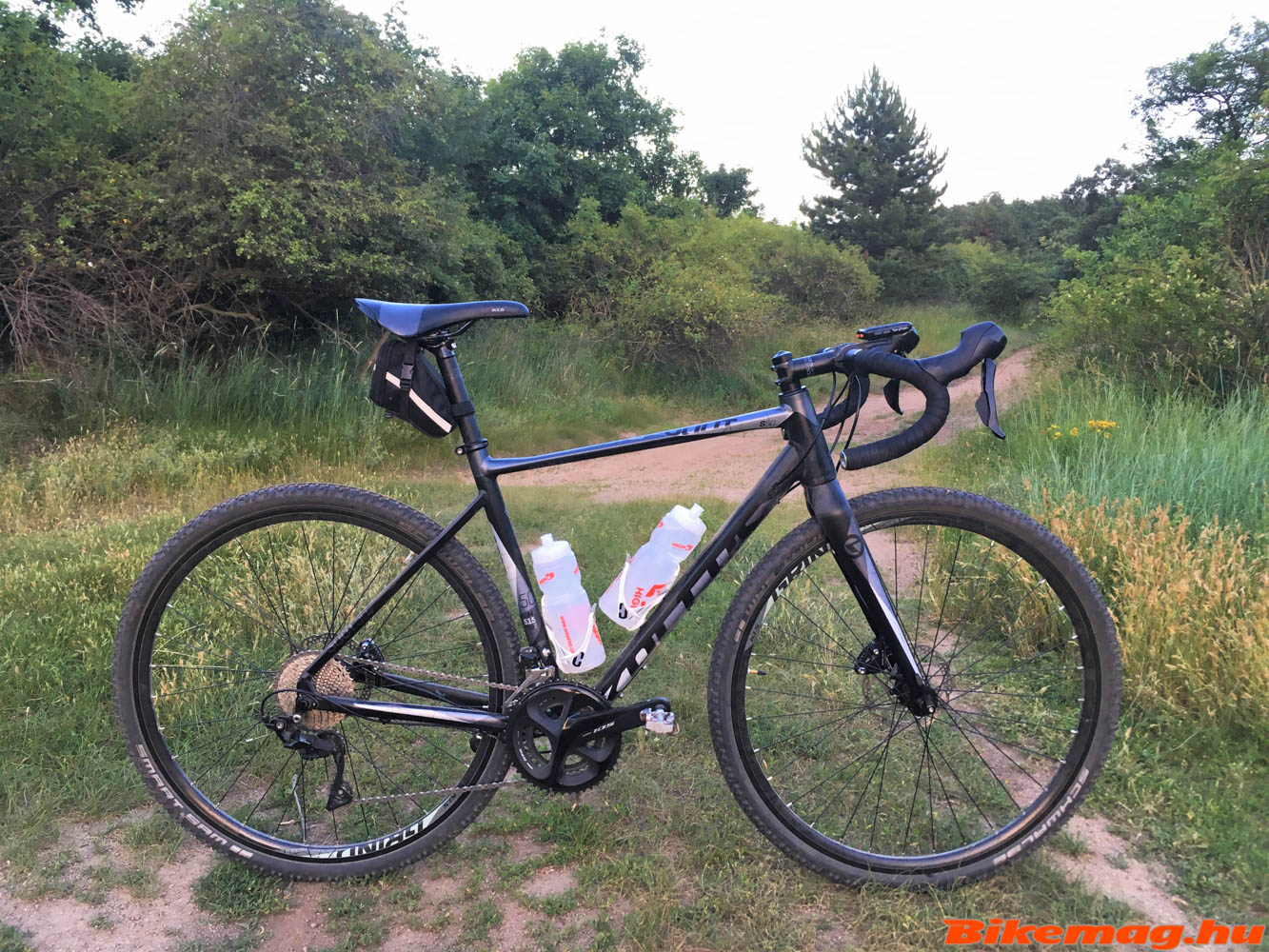One bike for all your rides? Off road or tarmac, loaded with bags setting out on a bike touring adventure? Isn’t this a bit too much to ask from just one bike? The present review of the Kellys Soot 50 gravel bike will answer all these questions!
This is an unusual review in the sense that the Kellys Soot 50 has been in my stable much longer than test bikes. In fact I have been riding it for over a year now, amassing plenty of experience to share with the readers. This was my first foray into the world of gravel bikes, which served as a reference for other models I rode for the purpose of writing reviews. This bike was designed to do everything, making it an architype for the gravel bike concept. Moreover, I was the given permission to modify the bike’s original setup in order to achieve the best possible fit for my anatomy, taste and expectations. This is not something we tend to do with other test bikes.
Since I have so much information to share, this write-up will be followed up by further installments. I‘ll be taking it on all kinds of rides to test it in as many disciplines and utilizations as possible. In future articles I’ll report on how some of the modifications to the original setup turned out. This may be of some help to those who are thinking about the same strategies – even on a different bike. This first write-up is going to focus on the factory configuration, and how our “relationship” started and evolved over this lengthy time period.
The Soot model first appeared in 2018 within the Kellys product range. This was the year the Slovakian brand launched its first dedicated gravel bike. Thanks to its great success, the Soot remained essentially unchanged for 2019. The 50 sits in the middle of the model range, and this was what we chose for this long term test.
The Soot’s frame is made from aluminum alloy featuring all the technology we’ve come to expect from an up-to-date bike. Therefore all cables are routed inside the frame, the head tube and the carbon fork is tapered for stability and durability, the wheel axles use the superior thru-axle system and the disc brakes are the modern flat mount variety. The frame geometry has been designed to provide a sporty character which provides benefits for most common ride conditions. This is something I appreciate in a gravel bike, as I like the handlebars to be low with plenty of room in the “cockpit”. Most gravel bike I tested have overly high “stack” for my style of riding, requiring a 17 degree stem to position the bar at an acceptable height. I actually found bikes where no efficient position could be worked out, no matter what component was substituted. In case of the Soot model range the rider gets a short 150 mm head tube for size “M”. The fork is a carbon model which matches the frame both in design and geometry, and offers flat mount standard for the disc brake caliper attachment.
Both the frame and fork offers plenty of tire clearance, so much so that a 47 mm tire could be mounted on a standard “622” wheel. This would be somewhat of a stretch as an outsized rubber like this would elevate the bottom bracket to uncomfortable heights. So if wide tires are what you’re after, it may make more sense to install them on 650B wheels. On the other hand, there’s nothing stopping you to go narrower: this is what I did for my road training rides. All in all, the Soot is compatible with a wide selection of tires and both common wheel sizes, making it a true all-rounder.
You may have guessed why I’ve been highlighting the short head tube and the large tire clearance. After owning this bike for over a year while testing various models from competing brands, I’m convinced that these two features are what define a perfect rig for multi-purpose riding. It’s easy to set the bars low enough to go on road training rides with narrow tires. It’s also possible to mount beefy rubber or even a more apt wheelset for gravel and trail riding. Between these two extremes there a multitude of options including a bikepacking or a cyclocross racer setup. Using the Soot for commuting should also work: the design not too flashy and the durable aluminum frame lends itself to city riding. Mounting mudguards is an easy affair as eyelets are available both on the frame and the fork.
This incredible versatility makes writing a review on this bike quite a challenge. Should I be testing all these options? Yes, this is what I’m planning to do with the Kellys Soot 50, and you’ll be able to read about all its faces.
As I have mentioned, the Soot 50 stands in the middle of the price range. But it’s only mid-range in terms of the price, not the equipment. At HUF 429,990 it’s 40,000 less than the top of-the-line Soot 70, it features a Shimano 105 hydraulic disc 2×11 component set while the more expensive kin has a 1×11 SRAM setup complemented by a dropper post. In addition, the two models come in a different finishes. For me it was a no-brainer to choose the model variant with the wider gear ratio, providing even more possibilities when it comes to off-road riding. There is also a slightly larger gear for doing high tempo on group rides. (I’ll have more observations on the bike’s gearing choice later in the review.)
Let’s see the component setup in detail!
The front and rear derailleurs and the crankset all come from the much esteemed standard Shimano 105 “gruppo”. These are complemented by the RS505 hydraulic brake/shift levers and the matching calipers. The latter are a perfect fit to the 105 brake and shifting- performance-wise, although visually the jury is still out on the lever design. The new 105 hydraulic “brifters” are much more pleasing to the eye, but my colleague assured me that bleeding the RS505 is much easier, so I shouldn’t despair. Well I have to look at these components more than perform brake fluid change, but then again, I can live with this compromise!
The wheels are quite sturdy, Novatec hubs laced to Kellys Grind Disc rims. They should be strong enough to cope with challenging gravel adventures, and outperform even some MTB wheelsets from the past. I’d say these hoops could be ridden off road with confidence. In this regard, the only limiting factor is their 17 mm internal width. On the other hand, this allows fitting the bike with narrower tires for riding on asphalt roads. A 25-47 mm tire selection could be considered a realistic range for the Soot, and as a bonus, the wheel set is tubeless-ready making tube-free riding a viable option too. This Sooth model comes from the factory with 42 mm wide Schwalbe Smart Sam tires with tubes, which could be considered a good choice for gravel and general riding.
The handlebar, stem and the seat post come from Kellys’ own brand (KLS), they’re decent quality parts, especially the stem, which could be considered a premium choice for any bike. The saddle has more than a passing resemblance to a certain Fizik model, and offers similar shape and comfort. Fizik is known to produce saddles for other brands, so this KLS model may actually come from the same factory as its foregoer. The handlebar has a distinct shape, which is something I’d like to elaborate on when talking about ergonomics and comfort.
Out riding
Setting up the bike for the first ride was an easy affair as it came to me fully assembled. All I had to do is set the saddle height and the handlebar position, and I was off to venture the gravel roads in our area. There was no need to change any of the components to achieve my preferred bike position. In fact, I left a single spacer underneath the stem which I might later remove for fast road rides.
The next outing was born out of necessity. I was invited to take part in a group ride with Gunn-Rita Dahle in the hills surrounding Budapest. At the time my MTB was not working properly, so I no other choice than to bring the Soot for the ride. I was a bit anxious since this bike offers essentially road bike gearing and the tires have to be inflated to 3.5 Bar in order to avoid pinch flats on rocky terrain. To my great relief I could easily keep up the group, and the Smart Sam performed surprisingly well in those challenging off-road conditions. On hardpack trails I may have had an advantage over other riding full-fledged cross country MTBs.
Of course on gnarly downhill sections I was a bit distanced as I tried to do my best to navigate through rock garden with a rigid front fork and drop bars. This is something Kellys engineers didn’t even consider when working on the Soot: the bike was developed primarily for gravel roads. Nevertheless the tires held up, and when the descent was over, I felt pleasantly surprised by the bike extreme off-road capabilities. Come to think of it, early mountain bikes ridden by the pioneers were not a dissimilar to my rig, the tires and the bars not much wider that’s for sure!
The wet spring in 2018 made testing more stimulating, in some instances quite harsh. I rode the Soot in mud more than I fancied. I stated to imagine being a cyclocross racer. Meanwhile, I was constantly surprised by how good this bike handles in sloppy conditions. Changing the tires to a deeper tread would have transformed the Soot into an ideal amateur cyclocross racer. The bike chief appeal is that it can do more than what it promises.
Naturally the Soot handles best on roads it was designed to be ridden: that is hardpack or gravel. You can takes corners with full confidence on dirt while riding drop bars! It really shines when paved roads run out, when you venture deep in the countryside. These were the rides I enjoyed the most. I didn’t have to turn back, just kept going discovering new routes I though never existed.
June brought some dry weather and I was considering swopping the tires to smoother tread for some additional speed. Going tubeless would also help to increase comfort, while decreasing rolling resistance and the chance of getting flats. By the way, the frame itself does a good job at soaking up road surface irregularities contributing to the comfort the rider experiences. The next installment of the “Soot-series” will cover these modifications.
Handlebar shape has a great effect on the ride experience, and the Soot is equipped with a bar that goes somewhat against the current gravel bike trend. The bottom portion is not overly flared, it features essentially a conventional compact road bar bend. Personally I couldn’t be happier as I truly detest the look of the flared bars. I find them less comfortable to hold. I had no problems with the narrower hand position compared to the wide flared design either. I felt to have adequate control over the challenging descents, while I could still reach the brake levers with ease. This bar is not dissimilar to the one I have on my road bike with some added width to increase stability.
The Soot resembles road bikes in its gearing as well. Basically it comes with a standard road compact setup, 50/34T front chainrings paired to an 11-34 rear cluster. While the 50/11T high gear is unnecessary on a bike primarily designed for gravel riding, the low end proved to be perfect. One of the new Shimano GRX “sub-compact” cranksets would be the ideal choice with 46/30T chainrings. The designers at Kellys couldn’t have “specced” such a model, since it wasn’t in the Shimano lineup when the bike was manufactured. On the other hand, the high gearing may suit some riders, those who take this a bike on group training rides with narrow road tires. I’m debating whether to part out this otherwise excellent 105 crankset for a sub-compact variant, or just substitute a 46T chainring for the 50T.
Apart from the above-mentioned unconventional design choices, I haven’t found too many nags on the Soot during this extended time period. A minor issue is that the rim tape had the tendency to shift in the bead. I’d advise owners to swap these out as soon as possible to avoid mishaps. The other trifling issue is the toe overlap. It’s quite common for small frame sizes – especially on cyclocross and gravel bikes – to have an overlap between the toe-cap and the front tire, but I rarely experience this on the bikes in my size. It’s not a deal breaker, since it only manifests itself when riding at very low speed in tight corners. It’s just something to keep in mind if you have a lot of technical turns in your neck of woods.
This is where I finish off the first installment of the series dedicated to the Soot. I can say for certain that this bike is a truly versatile machine, one that can stand on its own on gravel and hard pack off road conditions, used as a training bike on asphalt, while providing the opportunity to delve into the world of cyclocross or bikepacking adventures. Not many bike carry so many masks!
The series will be continued shortly.
Recommended retail price HUF 429,990.
More information can be found on the Kellys website.


